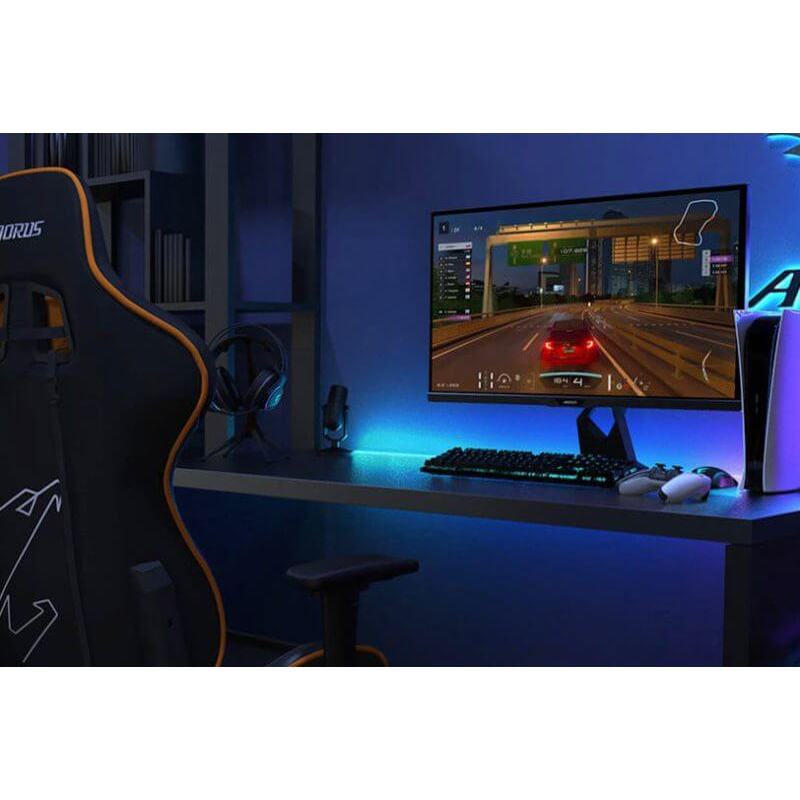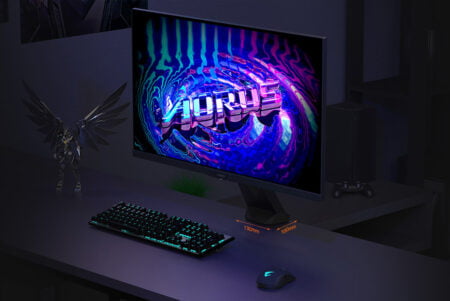CONS
- Expensive
- Color accuracy could be better out of the box
- Misses contrast ratio target
GIGABYTE AORUS FI32Q SPECS
| Panel Size (Corner-to-Corner) |
31.5 inches |
| Native Resolution |
2560 by 1440 |
| Aspect Ratio |
16:9 |
The Gigabyte Aorus FI32Q is a gaming monitor that excels in almost every aspect, from its sturdy base to its vibrant RGB lights, it offers a premium experience that is well worth the investment, especially considering that it can be found online for as low as . This monitor stands out for its impressive combination of features, making it one of the best options available in 2021 according to PC Labs. While those in need of precise color accuracy may prefer Dell’s Alienware 27 at the Aorus FI32Q surpasses it with its extensive feature set, setting a new standard in the industry. It is undoubtedly deserving of an Editors’ Choice award for being an exceptional high-end gaming monitor.
All the Right Moves.
The Aorus FI32Q is a 31.5-inch display with a resolution of 2,560 by 1,440 pixels. It boasts a refresh rate of 165Hz (which can be overclocked to 170Hz) and utilizes Gigabyte’s Super Speed IPS 8-bit panel technology. This particular display is just one example of the many options that have flooded the market in recent years, each with their own catchy names like Fast IPS and Nano IPS. These panels, pioneered by LG in 2019, have set a new standard in the competition between VA, TN, and IPS technologies. They offer impressive response times, incredibly low input latency, and vibrant colors that can support HDR ratings as high as HDR 1600.
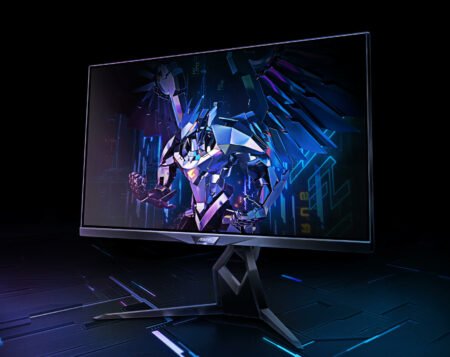
Gigabyte has included this panel in its high-end Aorus series of monitors and has set its price in line with options such as the. Razer Raptor 27 or the aforementioned Alienware, taking into account the FI32Q’s larger screen size. It seems that the absence of any compromises does come with a higher price tag!
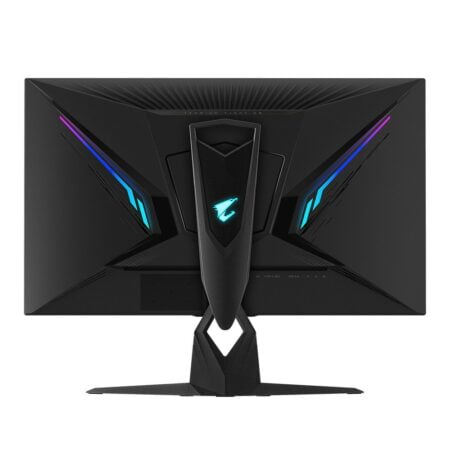
The monitor may be perceived as heavy at 33.5 pounds by some, however, its all-metal base exudes a sense of sturdiness that matches its weight. In our brief testing, we observed minimal screen shake when typing in close proximity. Additionally, the stand is designed to cater to alternative gamers, featuring a V shape that slopes upwards towards the center, enabling flexible keyboard positioning for optimal comfort during gameplay.
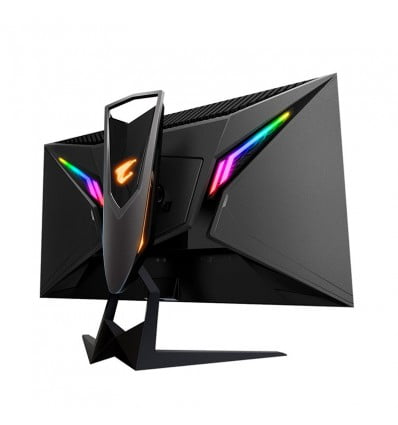
The Aorus offers a convenient feature of a 90-degree pivot between landscape and portrait modes on its display. However, as a programming platform, it may be considered excessive. Users who engage in gaming or media consumption will appreciate the various adjustment options available, such as a 40-degree swivel span, tilt ranging from -5 to 21 degrees, and wide viewing angles of 178 degrees.

While navigating through the PI32Q’s onscreen display (OSD) menu, which is conveniently controlled by a five-way joystick positioned in the center of the unit, we were pleasantly surprised by the extensive range of customization options available. These options encompass a comprehensive six-way color customization and calibration suite, individual controls for each of the monitor’s pre-set profiles (such as FPS, Racing, Cinema, and more), and unlocked settings that grant users the freedom to fine-tune every imaginable gaming feature. Moreover, the Aorus monitor even boasts a Magnifier feature, allowing users to enlarge a specific portion of the display for enhanced visibility. Placing it at the end of your gun can significantly improve your accuracy when aiming for headshots. However, it is important to note that such utilization could be deemed as cheating. To maintain integrity in the esports realm, it is crucial to emphasize that does not endorse the use of Monitor Enhanced Features (MEFs) to artificially inflate one’s kill count in the next Valorant match.
The monitor is equipped with two strips of RGB lighting positioned in a V shape at the back of the unit. Additionally, the stand showcases an illuminated Aorus logo. Both the lighting strips and the logo can be personalized or programmed using Gigabyte’s RGB Fusion 2.0 software or the OSD.
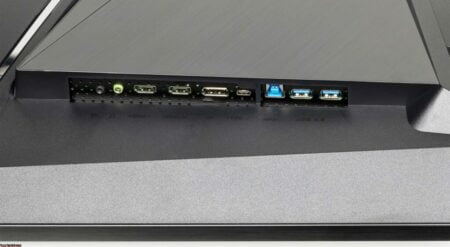
The ports of the monitor are arranged in a row beneath a lip on the right rear side, and they are quite extensive. To begin with, there are two HDMI 2.0 ports, a DisplayPort 1.4b input, and a USB 3.0 Type-C port for display purposes. Additionally, there is a 3.5mm headphone jack for audio pass-through via a USB 3.0 upstream port. This is accompanied by a mic-in port and two downstream USB 3.0 slots. You may wonder why there are so many ports. Well, they are there to support the onboard KVM functionality, of course!
Reviewing the Aorus FI32Q: Decent Color Accuracy, Exceptional in All Other Aspects.
The 1440p display includes a Super Speed IPS panel with a native refresh rate of 165Hz, which can be overclocked to 170Hz, as stated. It is HDR 400 certified and is compatible with AMD’s FreeSync Premium Pro technology to prevent screen tearing.
The FI32Q underwent our typical gaming monitor evaluation process with the use of a Datacolor SpyderX Elite colorimeter, a Murideo SIX-G signal generator, and Portrait Displays’ CalMAN 5 software. This is what we observed.
In the standard picture setting, we conducted tests using an SDR signal. The Aorus exhibited a maximum brightness of 369.4 nits (although it is designed for 400 nits) and a black level of 0.42 nit, resulting in a contrast ratio of 860:1, slightly lower than the expected 1,000:1 ratio, which is not entirely satisfactory. (For additional information on our monitor testing procedures, please refer to our detailed guidelines.)
Under the default picture mode, we ran tests using an SDR signal. The Aorus displayed a peak brightness of 369.4 nits (although it is specified for 400 nits) and a black level of 0.42 nit, resulting in a contrast ratio of 860:1, slightly below the expected 1,000:1 ratio, which falls short of our comfort level. (For more details on our monitor testing methodology, please refer to our comprehensive guidelines.)
Being an HDR400-rated monitor, we were aware of what to anticipate, however, Gigabyte’s incorporation of three distinct HDR implementations—HDR 400, HDR Game, and HDR Movie—added an element of intrigue to our testing. Among the trio, HDR Game exhibited the greatest brightness, reaching a peak of 532.9 nits.
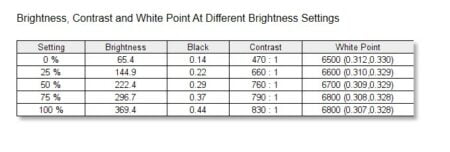
The Aorus FI32Q fell slightly short of the advertised color fidelity, achieving 100% of the sRGB gamut instead of the claimed 120% and 91% coverage of DCI-P3 compared to the expected 95%.
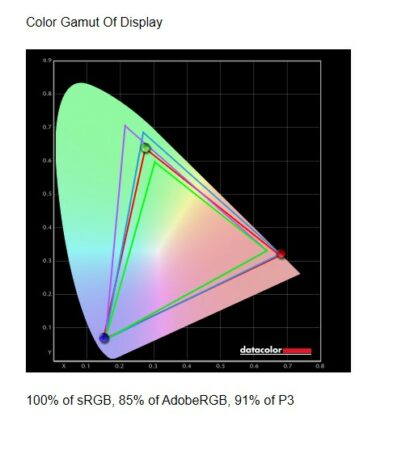
Given the abundance of color customization choices, it is conceivable that the initial delta-E result of 1.73 could be reduced through meticulous adjustments. However, it remains relatively elevated when compared to the MSI Optix MAG274R2, which boasts a dE of 0.91.
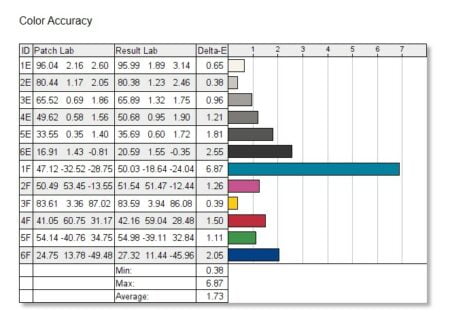
Moving forward, let’s delve into the performance benchmarks. Display technologies such as Super Speed IPS aim to justify their higher price point by offering impressive speeds and exceptional image quality, providing the ultimate gaming experience that modern monitors can offer.
The 4K Costa Rica test footage in HDR appeared stunningly beautiful on our monitor, which is expected considering the advancements in Nano IPS display technology. To further enhance the visual experience, I decided to watch movies and TV shows in HDR using the HDR Movie setting. Surprisingly, the colors were even more vibrant, rivaling the performance of monitors with significantly higher HDR brightness and contrast ratios. Finally, it was time to assess the monitor’s gaming capabilities, which is its primary purpose.
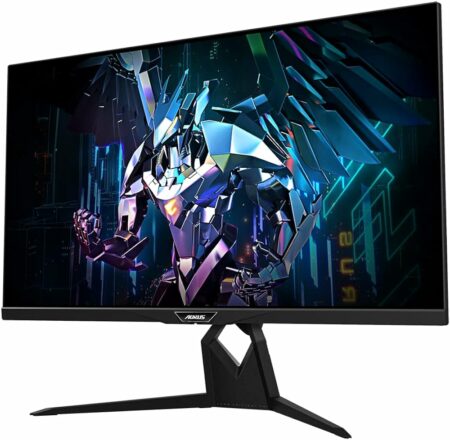
I began by launching Red Dead Redemption 2 and testing the HDR feature by toggling it on and off to evaluate the monitor’s performance. Similar to the visuals from Costa Rica, the game appeared stunning in all HDR modes tested, each offering a unique color profile that could be adjusted to suit individual preferences.
I initiated Red Dead Redemption 2 and experimented with the HDR setting by switching it on and off to assess the monitor’s capability. Much like the imagery from Costa Rica, the game looked impressive in every HDR mode I tested, each presenting a distinct color profile that could be tailored to match personal preferences.
When evaluating the conventional input delay (the time gap between a monitor receiving a signal and the screen refreshing), we employ an HDFury 4K Diva HDMI matrix. Operating with a 60Hz test signal, the FI32Q has become part of the increasing array of screens we have recently assessed that fall under 1 millisecond, although the exact figure eludes our detector.
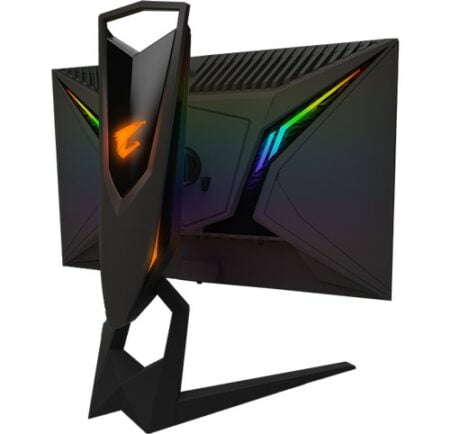
In conclusion, I conducted a series of tests on the FI32Q monitor to evaluate its gaming capabilities and speed. The monitor was put to the test with various popular esports titles such as Counter-Strike: Global Offensive, Valorant, Overwatch, and League of Legends. Throughout the testing process, the Aorus monitor exceeded expectations, delivering exceptional speed and responsiveness with minimal ghosting. It is worth noting that AMD’s FreeSync Premium Pro stands strong against Nvidia G-Sync Ultimate in today’s competitive market.
Gigabyte Unveils Impressive Large-Screen Innovation.
The Gigabyte Aorus FI32Q stands out among the top-tier 1440p IPS monitors, such as the ViewSonic Elite XG270QG, as a superior all-purpose option that has emerged in recent years. In contrast to the 27-inch model that caters to both esports and AAA gamers, individuals seeking a blend of cinematic gaming and movie-watching will discover that opting for a 32-inch or larger display is the only way to go.
To be frank, the FI32Q is the first monitor we have examined in quite some time that gives off the impression of being genuinely designed by gamers to meet their desires, rather than just focusing on what will appear impressive on a specification sheet. Although its LG panel may be utilized by approximately five other manufacturers, the Gigabyte monitor is the only one that truly allows it to shine by incorporating a range of additional features that we didn’t even realize we wanted until we encountered them here. The extensively customizable menu, along with pleasant surprises like the integrated KVM and an OSD with a built-in magnifying glass, elevate this monitor far beyond its competitors. Rivals such as Acer (whom we previously considered one of the best in terms of add-ons and OSD customization) will need to significantly enhance their offerings in order to keep up with the Aorus brand.

